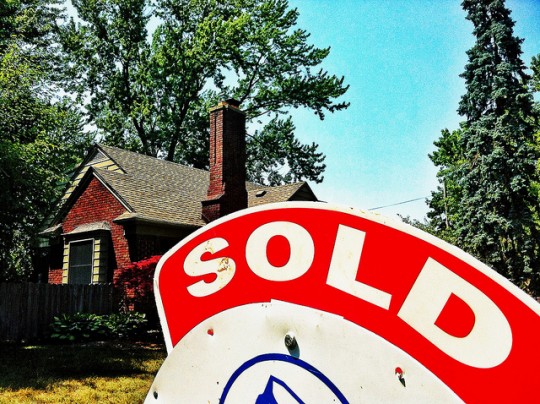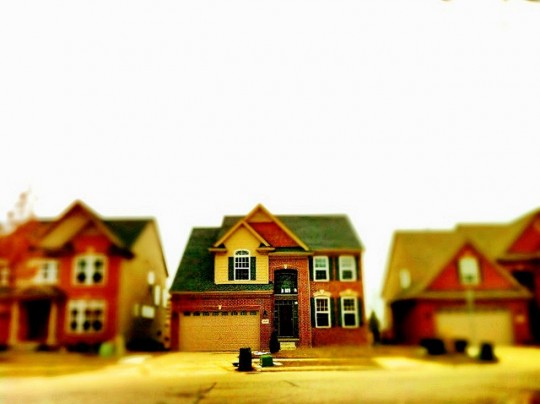Despite an up-and-down recovery, the housing market will enter 2014 more normal than it was a year earlier, according to a recent article from Trulia’s chief economist, Jed Kolko. Kolko says home price and mortgage rate increases have led to declining investor activity, which will inevitably result in less competition for potential buyers in the new year. And, though affordability levels have fallen – according to recent data -buying a home is still 35 percent cheaper than renting and a less frenzied market should be more inviting to prospective buyers. Also, next year will see increases in available inventory as the number of underwater homeowners continues to fall, which will help moderate price gains. Kolko believes repeat buyers will dominate the market in 2014, as investor activity tails off. Repeat buyers are less discouraged by higher prices than first-time buyers or investors, due to the fact that their existing home has likely also risen in value. More here.
Tag Archive for affordability
Home Purchase Activity To Outpace Refinancing In 2014
Next year will mark the first in more than a decade that the mortgage market is dominated by purchase, rather than refinance activity, according to Freddie Mac’s most recent U.S. Economic and Housing Market Outlook. The outlook, released monthly, forecasts upcoming economic and housing market conditions based on current trends and data. Frank Nothaft, Freddie Mac’s vice president and chief economist, said refinance activity – as a share of total mortgage demand – will drop below 50 percent in 2014, marking a major transition in the housing finance industry and the first time since 2000 that purchase loans outpace refinancing demand. Nothaft also believes that home-sales gains and price growth will begin to moderate to more sustainable levels in the next year. Still, the forecast calls for a 5 to 6 percent increase in both sales and prices in 2014. The report also expects affordability conditions to remain strong, with mortgage rates expected to rise gradually throughout the year. More here.
Majority Of Homes Affordable At Median Income
The National Association of Home Builders Housing Opportunity Index measures the percentage of new and existing homes that are affordable to families earning their areas’ median income. According to the most recent index, 64.5 percent of homes sold between the beginning of July and the end of September were affordable for a family earning the median U.S. income of $64,400. This is down from 69.3 percent in the second quarter. David Crowe, NAHB’s chief economist, said the more than year-long steady increase in home prices is primarily responsible for recent decreases in affordability. According to Crowe – though affordability has come down from its peak in early 2012 – a family earning the median income can still afford a majority of the homes available in the current market. More here.
Household Formation Slow Among Millennials
As of March 2013, only 34 percent of adults between the ages of 18 and 32 headed their own household. And that number has barely changed since last year, according to a recent report from the Pew Research Center. The lack of improvement in the rate of household formation among young adults has little to do with housing conditions, however. Record affordability and historically low mortgage rates have done little to reverse the high number of Millennials still living in their parents’ home. The reason more than a third of young adults are still living at home four years into an economic recovery is directly related to the job market. This year, 40 percent of employed young adults headed their own household, compared to 25 percent among unemployed Millennials. As the number of employed young adults rises, so to will the household formation rate and number of first-time home buyers entering the housing market. More here.
Pending Home Sales Fall 5.6%
The National Association of Realtors’ Pending Home Sales Index is a forward-looking indicator based on the number of contract signings each month. The Index doesn’t reflect closings but is a good indicator of future sales of previously owned homes. In September, the Index dropped 5.6 percent. It was the fourth consecutive month pending sales declined. Lawrence Yun, NAR’s chief economist, said concerns about the government shutdown played a role. According to Yun, declining housing affordability conditions combined with uncertainty caused by the looming shutdown were the likely cause of the reduced contract activity. But despite decreasing sales trends, existing-home sales will be 10 percent higher this year than 2012, reaching more than 5.1 million. Also, the NAR expects home prices to moderate next year after rising more than 11 percent this year. More here.
September Existing Home Sales Slide 1.9%
During the summer selling season, sales of previously owned homes reached the highest level in nearly four years. But, according to estimates from the National Association of Realtors, sales of existing homes fell 1.9 percent in September. Lawrence Yun, NAR’s chief economist, said the decline was expected. Affordability levels have fallen as home price increases have easily outpaced income growth, Yun said. Still, sales are 10.7 percent above year-ago levels and have been better than the year before for the past 27 consecutive months. Also in the report, the median time on market for all homes was 50 days, up from 43 days in August but far better than last year’s 70 day median. Total housing inventory was virtually unchanged, with a 5-month supply of homes available at the current sales pace. More here and here.
Housing Affordability Still High Despite Market Adjustments
Over the past few years, the combination of low home prices and falling mortgage rates led to historic levels of housing affordability. Buyers were able to afford more for their money, which along with an improving economy, led to a rebound in the housing market. This year saw increases in prices, rates, and sales, all of which indicated that housing was in the midst of a sustained and continuing recovery. But that market recovery also impacted affordability levels. Affordability has been slowly declining as mortgage rates and home values increased. But, according to Svenja Gudell, director of economic research at Zillow, housing affordability is still much higher than historical levels as compared to an average from 1985 to 2000. Gudell says recent fluctuations in the housing market are normal adjustments and part of the process of home prices returning to more sustainable levels. More here.







